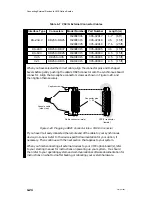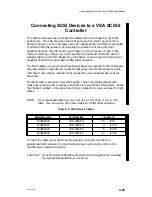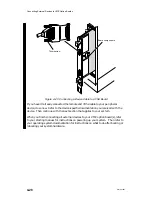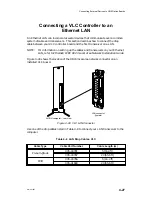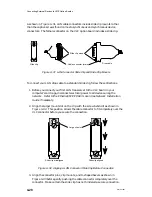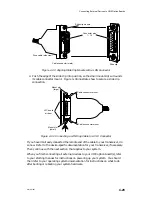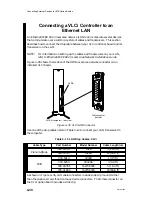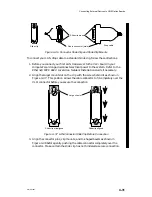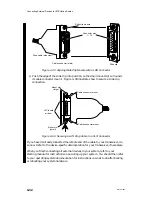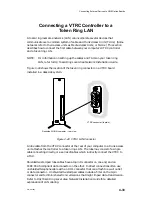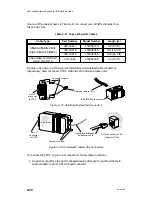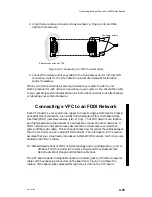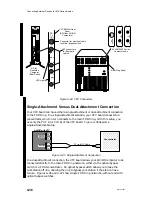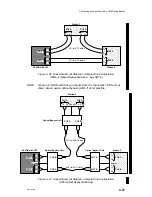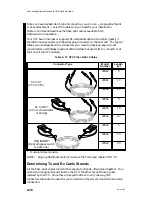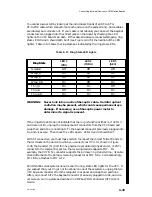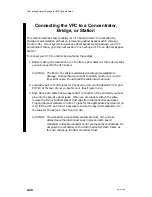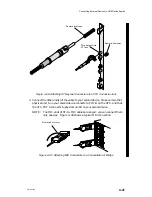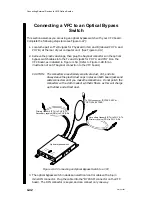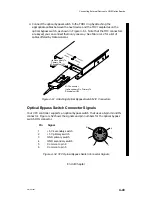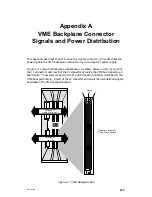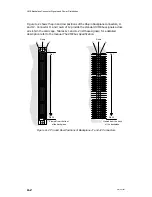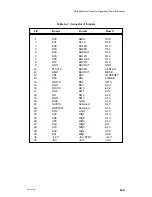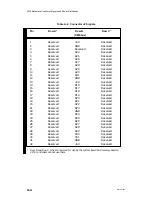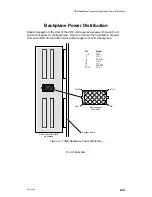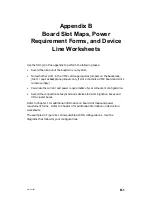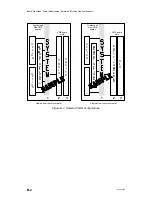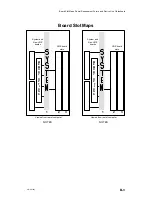
Connecting External Devices to VME Option Boards
4-38
014–001867
Once you have decided which type of connection you will use –– single-attachment
or dual-attachment –– select the cables you will need for your installation.
Table 4–12 lists and describes the fiber–optic cables available from
Data General Corporation.
Your VFC board includes or supports ST-compatible optical connectors (jacks); it
therefore requires cables with bayonet plug connectors on the host end. The type of
cables you use depends on the connectors your receiving devices require; most
concentrators and bridges require Media Interface Connector (MIC) connectors at
their end of the VFC cable(s).
Table 4–12 VFC Fiber–Optic Cables
Connector Type
Model
Number
Length
(m)
40567
5
ST to ST
(VFC to VFC)
40561
10
40564
20
T to
C
40566
5
ST to MIC*
(VFC to concentrator
or bridge)
40560
10
40563
20
40565
5
C to
C
40559
10
MIC to MIC*
(Optical bypass switch
to data link)
40562
20
*
Media Interface Connector.
NOTE:
Single–attachment stations must use the Tx/Rx pair labeled “PHY B.”
Determining Tx and Rx Cable Strands
All the fiber–optic cables consist of two separate strands, often joined together. One
strand carries signals transmitted by the VFC; the other carries those signals
received by the VFC. Since they are keyed to attach in only one way, MIC
connectors eliminate the need for you to determine the correct transmit and receive
connection.
Summary of Contents for AViiON 5000 Series
Page 2: ......
Page 6: ......
Page 12: ...Preface x 014 001867 ...
Page 86: ...Configuring VME Option Boards 2 52 014 001867 ...
Page 144: ...Connecting External Devices to VME Option Boards 4 44 014 001867 ...
Page 150: ...VME Backplane Connector Signals and Power Distribution A 6 014 001867 ...
Page 196: ...Assigning VME Data Bus and Interrupt Priorities E 10 014 001867 ...
Page 206: ......
Page 210: ...Appendix Title ...

